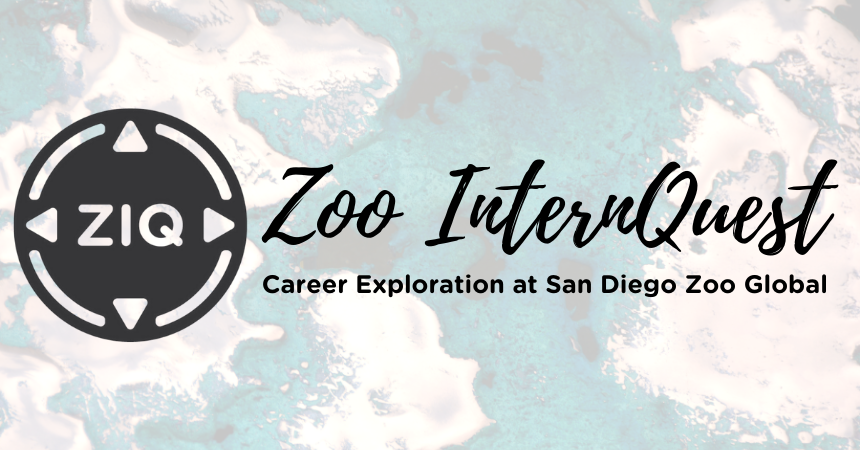Zoo InternQuest is a seven-week career exploration program for San Diego County high school juniors and seniors. Students have the unique opportunity to meet professionals working for the San Diego Zoo Wildlife Alliance, to learn about their jobs, and then blog about their experience online. Follow their adventures here on the Zoo’s website!
Week three of Zoo Internquest provided the interns with an in-depth look into an underlooked position in This week the interns got an in-depth look into a little known position in conservation – social media managing. The interns met with the social media team for the San Diego Zoo Wildlife Alliance (SDZWA), headed by the social media supervisor, Taylor Moore, and the social media planner, Erin Reilly. This dynamic duo took us on a deep dive into how various social media platforms can be used for spreading awareness, education, promoting conservation stories, and saving species.
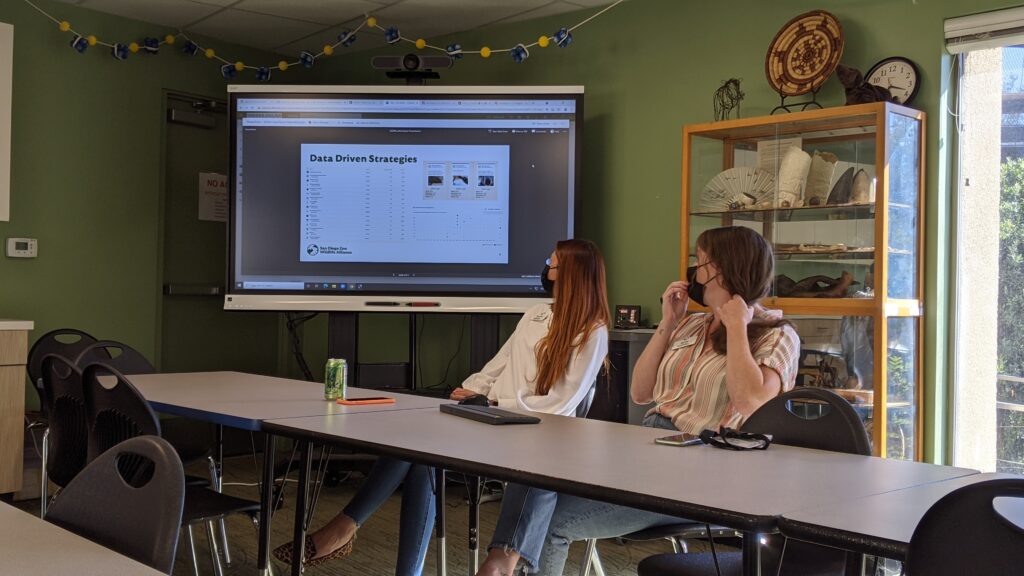
Ms. Moore and Ms. Reilly have always had a dedication for conservation and their social media skill set has allowed them to facilitate connections between people and wildlife, as well as highlighting the SDZWA’s conservation efforts in a modern way. Raised in New Jersey, Ms. Reilly always had a passion for both English and wildlife. She studied wildlife conservation at the University of Delaware but soon decided she wanted to pursue a degree in English and film, keeping wildlife conservation as a minor instead. She interned at the Tribeca Film Festival and soon got a job at Getty Images in Colorado. The skills she learned at Getty Images led her to her job at the SDZWA, where she was able to combine her two passions. Ms. Moore was born in Atlanta and left her hometown for Rome, Georgia to pursue a major in conservation biology at Berry College. However, she quickly changed her major to public relations and, after graduating, pursued a job in a public relations agency. Ms. Moore realized that job wasn’t the right position for her, so she soon transferred to the Georgia Aquarium to manage their social media. Networking and gaining experience gave her the opportunity to become the SDZWA’s social media supervisor in January 2020. Ms. Reilly and Ms. Moore are the only people that manage all the organization’s social media through a variety of platforms. The greatest challenges are managing the SDZWA’s social image and maintaining the balance between conservation and entertainment. This is a delicate balance indeed, attempting to educate their audience with information and conservation stories, as well as maintaining the fun people expect from the organization, all while building a social media following. Their role is important for conservation efforts, speaking as the SDZWA’s voice, and making an impact daily on their audience.
Currently, social media is becoming more important to conservation as it becomes increasingly popular for people around the world. Many people, especially young people, use social media and other new media technologies to produce, disseminate, and share information across groups. The impact and potency of the social media phenomena on today’s world cannot be underestimated. Its influence can be seen as a tool for coordinating and showing a variety of topics, including conservation related matters. As Ms. Moore described, “conservation has to be catchy. Conservation has to be modern.” This is why every post on all media types is planned accordingly by the social media team through data-driven strategies. Ms. Moore and Ms. Reilly do not simply post at random times, but strive to give the best content they can by applying past analytics. Some examples of analytics may include follower demographics, highest and lowest performing content, follower’s most active times, ranking compared to the social media accounts of other similar institutions, positive or negative reactions in comments, popular trends, and overall content interactions. All these factors help Ms. Moore and Ms. Reilly realize what types of content are interesting to their social media audience and when certain content is popular. By optimizing their posts using this data, they can ensure that their content is reaching a wider audience and spreading awareness about certain conservation stories and events occurring at the San Diego Zoo or Safari Park, or simply sharing information about a certain species or individual animal.
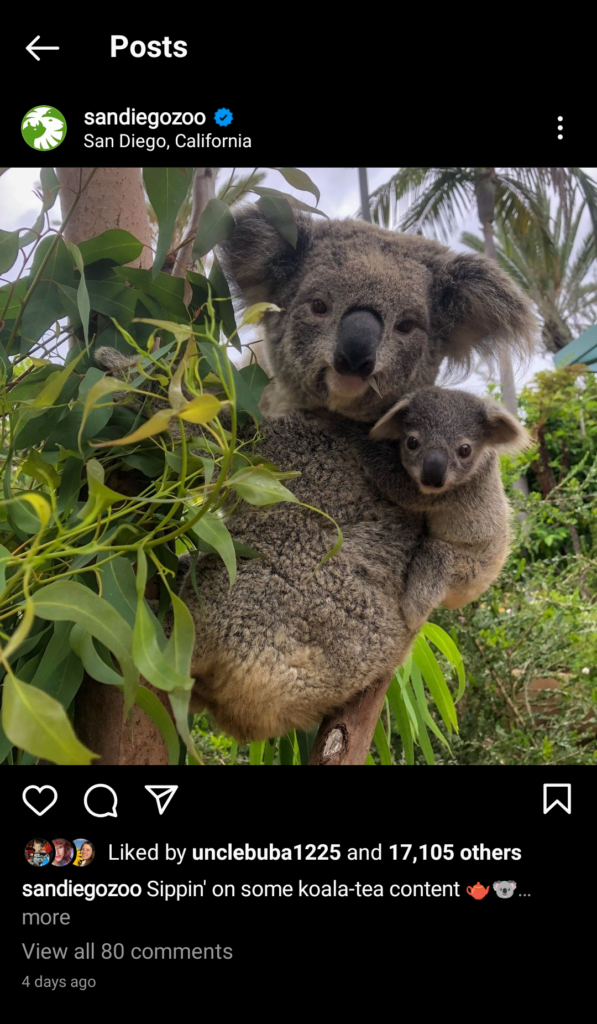
Another aspect of using social media to spread awareness of the SDZWA’s mission is partnering with influencers and brands to help spread the message quickly and efficiently. While followers may spend only seconds looking at a post, it can take days to create one.As each part of the post is strategically outlined, so is the caption, the heart of the entire post. Ms. Moore describes how deliberating a caption requires a creative headspace, especially because most of the captions include light hearted puns and play on words used to increase retention rate. Sometimes the creative headspace is a panda-monium, so thoughtful caption hooks can be toadally hard. The hard work that goes into making captions is vital in utilizing social media for conservation efforts, as the creative captions Ms. Moore and Ms. Reilly concoct helps capture the essence of each and every species. They really are helping save wildlife, one pun at a time. Campaigns are another great way to reach audiences in a fun and creative way. When campaigning, it is important to be optimistic, so posts usually include fun facts and other small tid-bits of information about the animal pictured, to increase awareness of their conservation threats and what can be done to mitigate those threats. If you are interested in seeing the lovely work of Ms. Moore and Ms. Reilly, or would love to catch up with the happenings at the SDZWA, you can follow the San Diego’s Zoo’s Instagram, Facebook, Twitter, or Tiktok.
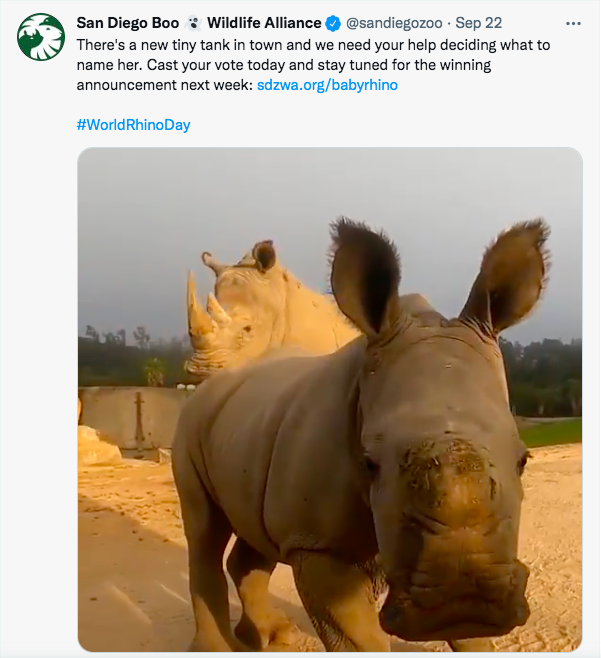
One of Ms. Moore’s favorite things about running social media is sharing really cool information that people wouldn’t usually know. Ms. Moore comments that “bird calls and singing dogs are not something the public get to see every day” so social media is a great way to teach the public and to provide opportunities for the community to experience the Zoo in a unique way. Another one of Ms. Moore’s and Ms. Reilly’s favorite things about working in social media is that they are never bored and they are always learning new things. One of Ms. Moore’s favorite projects that she’s worked on so far was creating a “What San Diego Zoo Animal Are You?” filter on Instagram. She enjoyed this project because she loved getting to learn how to program a filter and was very excited to see it be put to use by the public. Ms. Reilly’s favorite project so far has been organizing a naming contest for one of the rhino calves born at the Safari Park. She got to film with the baby rhino, working with the rhino specialists to get the best possible angle for the footage while still maintaining the safety of the rhinos and humans involved. She liked that it was a fun way to involve the community in online content. Ms. Reilly fondly remembers her first day on the truck at the Safari Park where she got to see the animals up close. Ms. Moore and Ms. Reilly both agreed that being within reach of the wildlife was a very surreal and personal experience. The interns could very clearly see that these two social media planners are very passionate and optimistic about what they do.
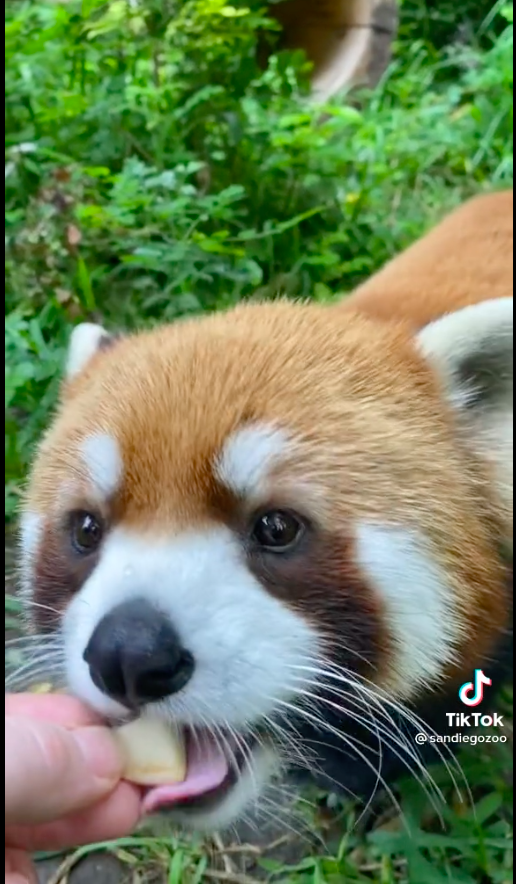
Determining what content is going to have the greatest impact on their audience can be quite a challenge. Over time, they have discovered that cute, fluffy animals receive the most likes and views. One of the most popular animals has been the red panda. The red panda is the only species in the family Ailuridae, and are distantly related to raccoons and weasels, not giant pandas. This endangered species is native to bamboo forests in the Himalayan Mountains. They spend the majority of their time in the trees, eating bamboo and fruits. Their long, thick fur provides both warmth and the perfect camouflage amongst the lichen and moss. Unfortunately, their numbers are rapidly declining due to the loss of this critical bamboo habitat. Lucas and Clark, two of the Zoo’s red pandas, are TikTok stars and have received millions of views and likes from a community that adores them. However, in order to capture all the cute and perfect moments, precautions must be taken. Red pandas are skittish animals and also require protected contact. Protected contact means a physical barrier is needed between humans and the animal to protect both parties. Because of this, our two media specialists can only get footage of our red pandas every couple of months, and must do so in creative ways. Ms. Moore and Ms. Reilly often can’t directly shoot the footage, instead they have the wildlife care specialists get the content that they need. They coach from the side lines giving the wildlife care specialists instructions along with cheering them on. Both Ms. Moore and Ms. Reilly also have to be extra cautious on how they take photos and videos to make sure it appears as natural as possible and that these wild animals are not mistaken for pets. In the end their work has paid off with cute videos of Lucas eating apples and laying on logs while Clark munches on his grapes and climbs around.
If you are passionate about conservation but not as interested in science and math, this career path might be for you. While social media is not something you can have as a major in college yet, Ms. Moore and Ms. Reilly had some helpful recommendations on how to prepare for a career in social media. They advised that it is best to have experience with photography and photo editing because some of the most important aspects of running social media accounts are eye-catching photos and videography. Ms. Moore and Ms. Reilly also suggested doing anything you can to stand out; even managing an Instagram page for a small animal shelter can help set you apart. Ms. Reilly shared that she took every chance she could to gain experience, even if no one else wanted to do it. This gave her the opportunity to meet many new people, start networking, and it showed that she was a go-getter. To be a social media expert, some talents that are good to have are strong decision making skills, thoughtfulness, and the ability to work with a team. Because they often have to create posts in advance, including which animals to use to capture the audience’s attention, it takes a lot of organization and planning. Ms. Moore and Ms. Reilly prove that you can still have a very powerful impact helping wildlife even if you are not working hands-on with the animals every day.
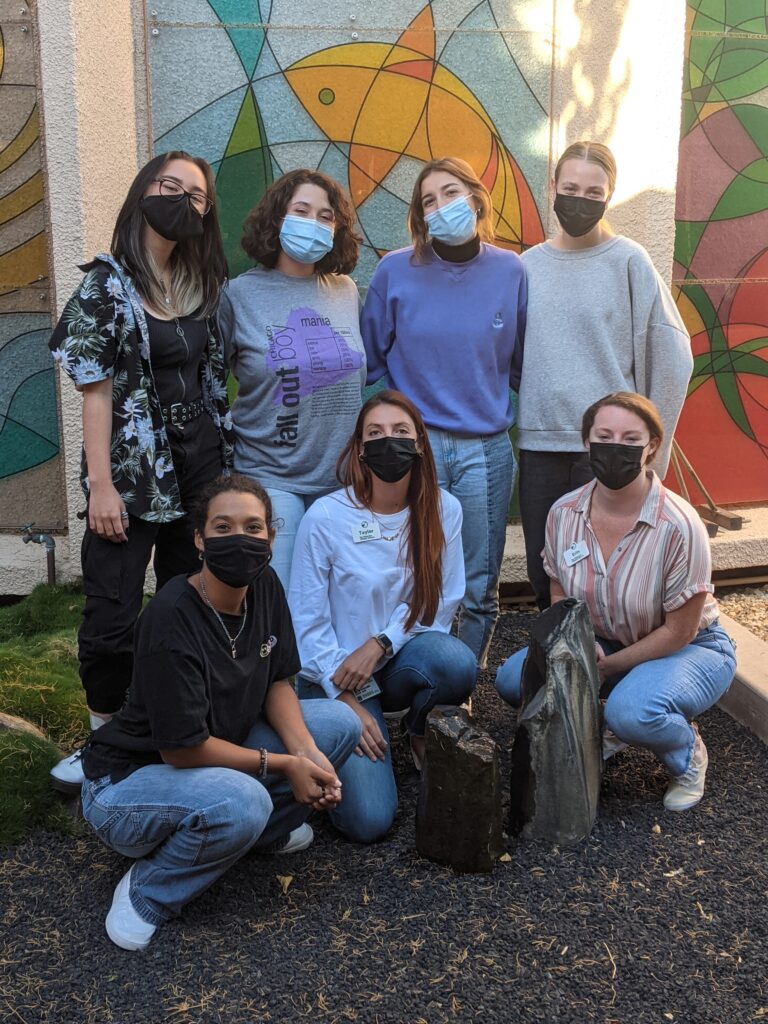
The interns came away from this day even more intrigued than they started, still pondering the data and the many trends in analytics that could be put to use in sharing the SDZWA’s conservation messages. The interns were captivated with the presentation and the many ways social media can influence conservation. The lesson learned was that there is so much more to conservation than just working directly with wildlife. One of the most important parts of being an ally for wildlife is spreading awareness and inspiring others to support conservation efforts. The interns are not lion when they say Ms. Reilly and Ms. Moore are invaluable to the mission of the San Diego Zoo Wildlife Alliance.
Week Three, Fall Session 2021

